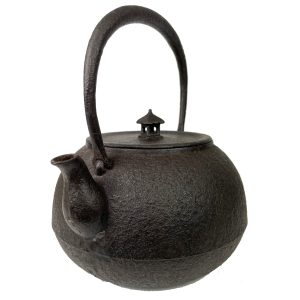Antique Cast Iron Tea Kettle (Tetsubin) with Temple Shrine on Lid (1799JOK) $295
$295.00H: 8.625” W: 7.5” D: 6.5” | FREE SHIPPING within Continental u.s.!
Traditionally been used to boil water for the Japanese Tea Ceremony. With its large handle, rounded shape, pitted surface and rare ornamental temple-shaped knob it would enhance any kitchen and be a wonderful gift of any tea lover.

